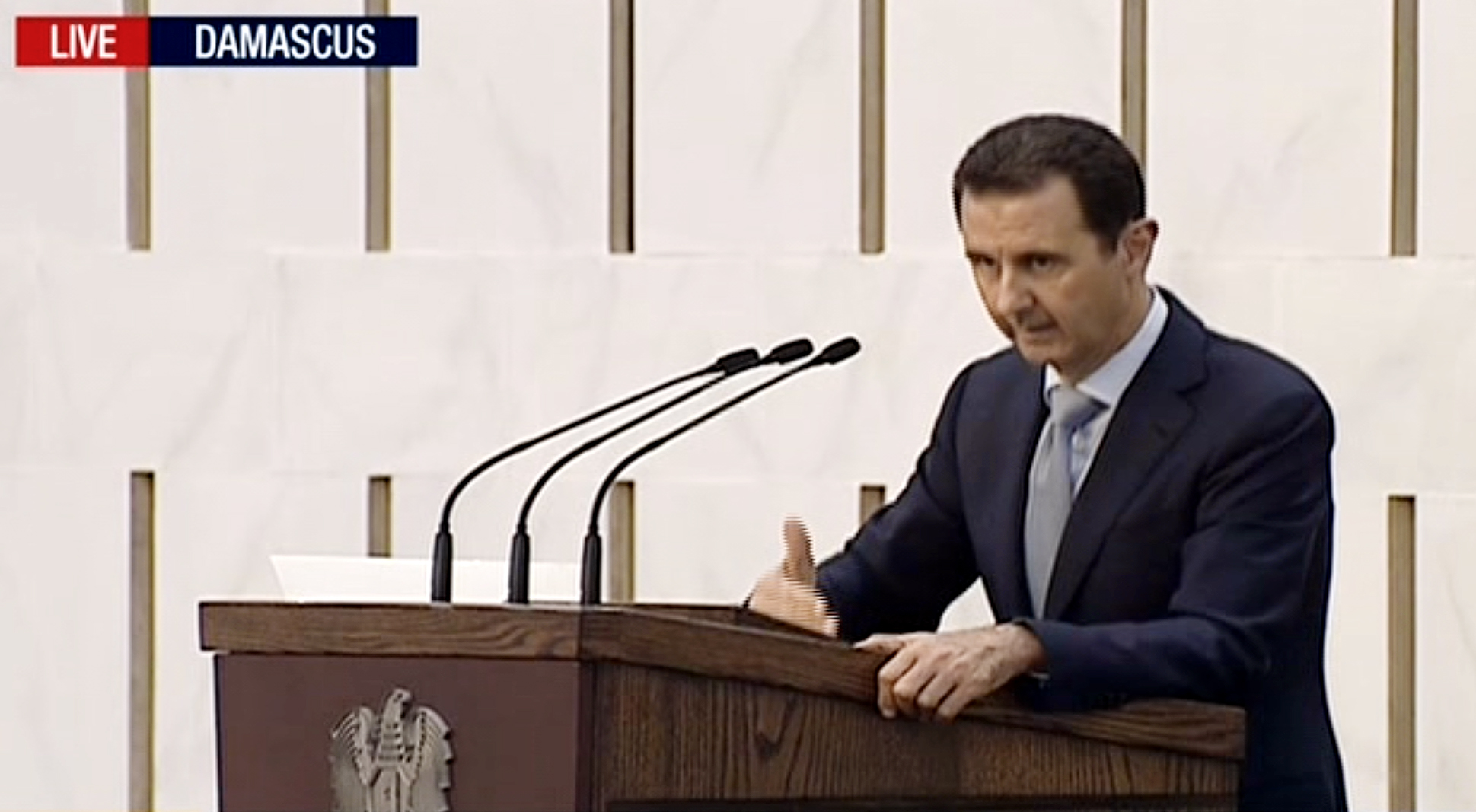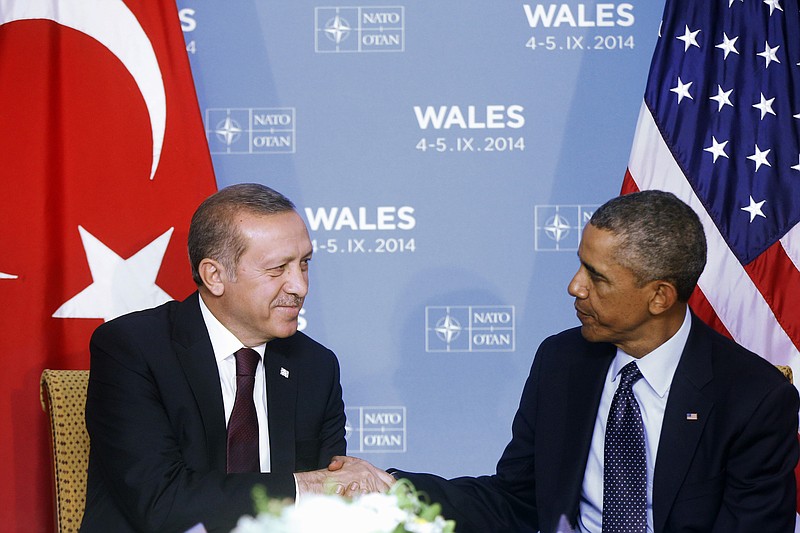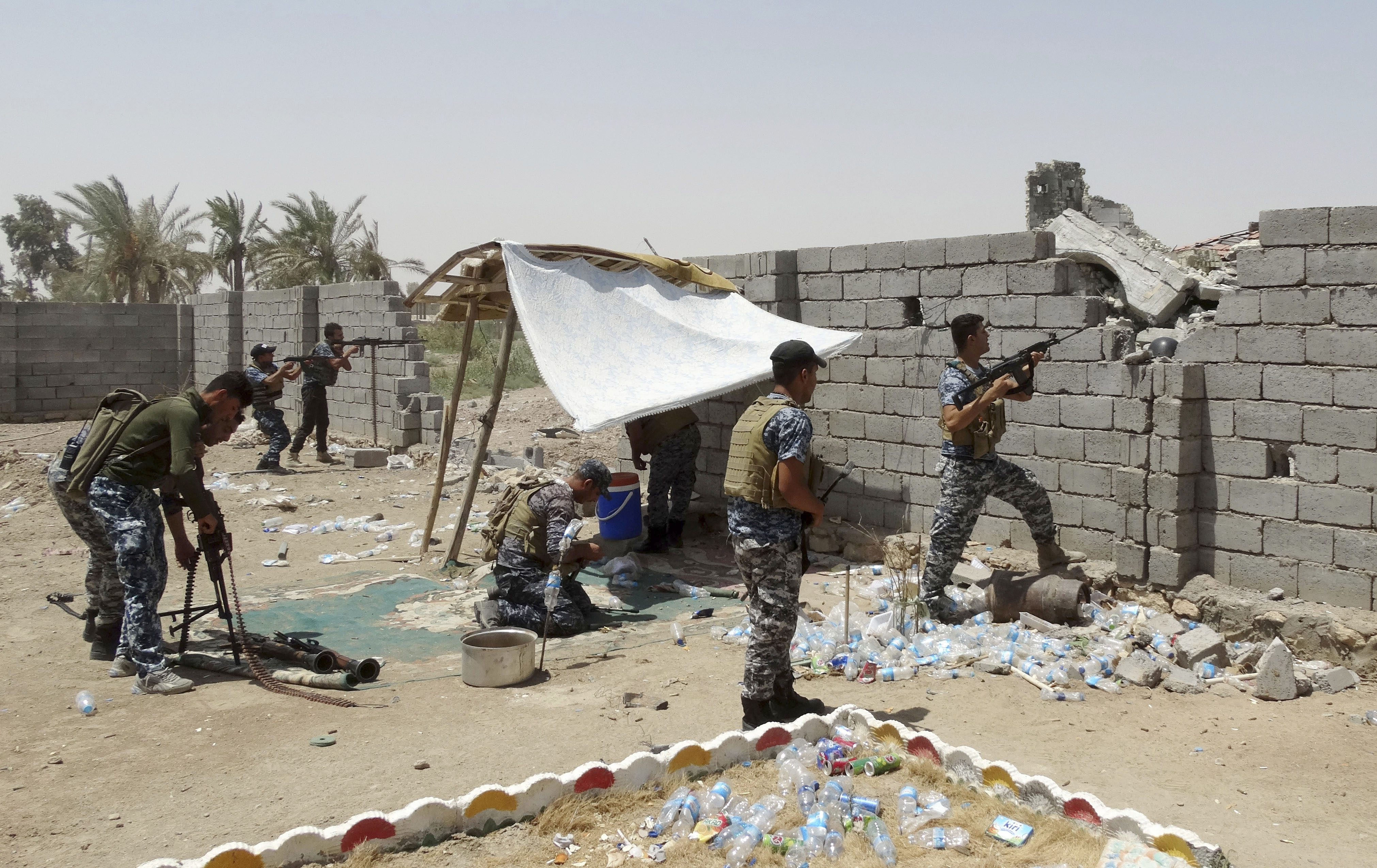WASHINGTON -- The U.S. and its allies, after several years of missteps, finally seem to be framing a strategy for combating the Islamic State militarily in Syria, even as they continue to pursue a political settlement with Damascus.
The Syrian nightmare is far from over, and supporters of President Bashar al-Assad continue to insist that the regime will survive the turmoil. But U.S. policy now appears to be working in tandem with Russia, Saudi Arabia and Turkey, a rare alignment - although Iran remains a potential spoiler.
The biggest change is the U.S.-Turkish agreement on a plan for closing the Syrian border, with a safe zone tens of miles deep that will be secured mainly by Turkish troops. Officials believe this will cut off supplies for the Islamic State's "capital" of Raqqa, while U.S. and Turkish warplanes pound the group's fighters from air bases in Turkey.
 This image made from video broadcast on Press TV, Iran's English language state-run channel shows Syrian President Bashar Assad delivering a speech in Damascus, Syria, Sunday, July 26, 2015. Assad says he supports any political dialogue to end his country's civil war even if its effects are limited. But he says any initiative that is not based on fighting "terrorism" will be "hollow" and "meaningless." (Press TV via AP video)
This image made from video broadcast on Press TV, Iran's English language state-run channel shows Syrian President Bashar Assad delivering a speech in Damascus, Syria, Sunday, July 26, 2015. Assad says he supports any political dialogue to end his country's civil war even if its effects are limited. But he says any initiative that is not based on fighting "terrorism" will be "hollow" and "meaningless." (Press TV via AP video) The border gap that must be closed is a roughly 60-mile stretch from the Euphrates River to Kilis, north of Aleppo.
The U.S. has quietly warned Syria that it will repel any attack on the forces gathering for the assault on the Islamic State. That's not the same as a formal "no-fly zone," but it could become one if Assad's air force strikes.
A ground assault on Raqqa is still months away. The U.S. is mobilizing a local, tribal force of Syrian Kurds, Arabs and Turkmen that could eventually clear northeast Syria, with U.S. and coalition air support. At present, the U.S. has no plans to embed special operations forces with these fighters.
A U.S. effort to train a Syrian counterterror force also continues under Maj. Gen Michael Nagata, but slowly. The first graduating class had just 54 Syrian recruits. A second class with several hundred fighters is being trained, and nearly 6,000 Syrians are said to have volunteered - though that number could fall by more than two-thirds once vetting and training are completed.
On the southern front, along the Syrian-Jordanian border, pressure is also mounting. Here, the Syrian rebels have been trained in a covert program run by the CIA and Jordanian intelligence. They are said to control increasing territory south of Damascus, allowing the Jordanians to strike northeast toward Islamic State positions, and perhaps move to secure Damascus if the Assad regime should fall.
A dilemma for the U.S.-led coalition is whether to treat Jabhat al-Nusra, the Syrian al-Qaeda affiliate, as a threat equal to the Islamic State. The two terror groups are rivals and take regular potshots at each other in social media. Some U.S. counterterrorism officials see Nusra as a deadly long-term foe, in part because it is well organized and has deep roots in Syria. But many U.S. allies in the region - including Jordan, Qatar and even Israel - maintain quiet intelligence contacts with Nusra.
The new push in Syria comes as the Iraqi military seeks to retake Ramadi, which fell in May. U.S. officials hope Iraqi forces will regain control within the next several months. That would leave Fallujah as an Islamic State stronghold less than 40 miles west of Baghdad. The Fallujah front is manned by Shiite militias under Iranian control, complicating U.S. and Iraqi military planning.
The U.S. goal in Iraq, as in Syria, is to mobilize Sunni tribal forces, but this has been a slow roll. About 1,500 tribal fighters are now being trained at al-Taqaddum Air Base in Anbar province, and an additional 3,500 Sunni police are preparing to restore order in Ramadi once it's cleared. But that's a small force, and it suggests limited buy-in from Sunni leaders.
The Obama administration hopes the new military pressure in Syria will convince Assad to accept a political process that would lead to a change of leadership in Syria, if not a full change of regime. With Saudi Arabia and Russia both interested, this diplomatic track shows some promise.
A sign of the diplomatic ferment was a rumor this week from Damascus that Ali Mamlouk, Assad's top intelligence chief, had just visited Saudi Arabia to explore a "rapprochement." That may portend an interlude of mixed talking and fighting with Damascus while the battle against the Islamic State accelerates.
Washington Post Writers Group

